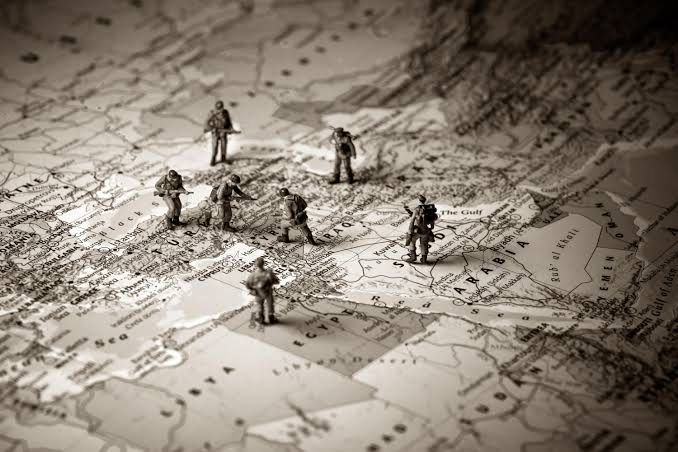The Shifting Sovereignties of Estonia: A Chronological Exploration over the Last Three Centuries
The geopolitical history of Estonia, located in Northern Europe, paints a compelling tale of shifting sovereignties, from foreign dominion to independence. Over the past three centuries, control over this territory has changed hands several times, involving a variety of regional and global powers. 1. The Swedish Era (1561-1721): Although the

The geopolitical history of Estonia, located in Northern Europe, paints a compelling tale of shifting sovereignties, from foreign dominion to independence. Over the past three centuries, control over this territory has changed hands several times, involving a variety of regional and global powers.
- The Swedish Era (1561-1721): Although the starting point of our 300-year chronology technically falls within this period, it's essential to understand the context. The Swedish Empire held control over present-day Estonia following the Livonian War. The country was known as Swedish Estonia during this time.
- The Russian Empire (1721-1918): The Treaty of Nystad in 1721, which marked the end of the Great Northern War, saw Estonia ceded from Sweden to Russia. Estonia thus became a governorate of the Russian Empire for approximately 200 years.
- The First Estonian Republic (1918-1940): Following the Russian revolutions of 1917 and the subsequent chaos of World War I, Estonia declared independence from Russia in February 1918. The Tartu Peace Treaty in 1920 between Soviet Russia and Estonia formalized this.
- The Soviet Occupation (1940-1941): The infamous secret protocol of the 1939 Molotov-Ribbentrop Pact between Nazi Germany and the Soviet Union set the stage for the first Soviet occupation, beginning in June 1940.
- The Nazi Occupation (1941-1944): Shortly after, Nazi Germany invaded and occupied Estonia during World War II.
- The Soviet Union (1944-1991): After the retreat of the Nazis, the Soviet Union reoccupied Estonia. This period, lasting nearly half a century, was characterized by severe political repression and Russification policies.
- The Republic of Estonia (1991-present): In August 1991, following a failed coup in Moscow, Estonia reestablished its independence from the USSR. Today, it stands as a member of the United Nations, NATO, and the European Union, signifying its stable international standing and sovereignty.
In conclusion, over the past 300 years, the present-day territory of Estonia has been under the control of a foreign power four times - once under the Swedish Empire, once under the Russian Empire, and twice under the Soviet Union, with a brief period of Nazi Germany control. Additionally, it has enjoyed two periods of independence, with the current one starting in 1991 and continuing to the present day. This chronology underscores Estonia's resilience and ability to maintain a distinct national identity despite recurring foreign dominion.
Navigating the Flux: The Unpredictable Trajectory of Russia's Future"
Russia, a nation synonymous with power, mystery, and complexity, sits at a unique crossroads of history. Its future, like any other country, is far from preordained; it's not set in stone. The trajectory it follows will be an interplay of myriad factors – political, economic, social, and cultural. This discussion seeks to delve into the open-ended question of Russia's future, recognizing that the paths before it are as diverse as they are unpredictable.
The prevailing narrative often paints Russia as a nation in the shadow of its imperial past, striving to regain the influence it once wielded as the Russian Empire and later, the Soviet Union. Indeed, the current political leadership under President Vladimir Putin appears to champion a resurgent Russia on the global stage. The annexation of Crimea in 2014, its role in Syria, and the ongoing situation in Ukraine stand as testament to this ambition.
However, viewing Russia solely through the lens of geopolitical dominance risks oversimplification. Just as crucial to understanding the country's future is acknowledging its vast internal complexities. Russia is grappling with economic challenges, demographic shifts, technological transformations, environmental issues, and a youth increasingly connected with global cultures. It's not just a country pursuing greater geopolitical influence; it's a country searching for its identity and place in a rapidly changing world.
Economically, Russia's over-reliance on natural resources, particularly oil and gas, leaves it vulnerable to global market fluctuations. The need to diversify the economy, foster innovation, and address wealth inequality will heavily impact its future direction.
Demographically, Russia faces a shrinking and aging population. However, it's also witnessing a growing digital-native generation with global exposure, demanding more transparency, inclusivity, and sustainability. The manner in which the government responds to these internal pressures will undeniably shape Russia's social and political landscape.
In the realm of technology, Russia stands at the precipice of the fourth industrial revolution. The country's approach towards technological innovation, internet freedom, and cybersecurity will be instrumental in defining its domestic progress and international standing.
Ecologically, Russia is at the frontline of climate change. With the largest landmass in the world, much of it permafrost, it faces both risk and opportunity in a warming world. Russia's environmental policies and its role in global climate action will undoubtedly play a crucial role in its future.
It's evident that Russia's trajectory will be shaped not merely by its geopolitical ambitions but also by how it navigates these internal dynamics. Moreover, it's important to remember that the country isn't monolithic. It's home to diverse voices and visions for the future – some aligning with the state narrative, others challenging it.
To assert that the future of Russia, or any country, is set in stone is to overlook the complexities and fluid nature of history. It's the confluence of myriad factors, seen and unseen, planned and unexpected, that will steer Russia's course in the global narrative. One can only hope that the path chosen will not only enhance the well-being of its citizens but also contribute positively to the broader tapestry of our interconnected world.




